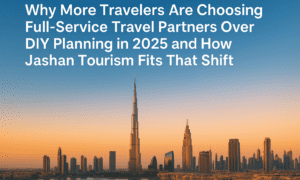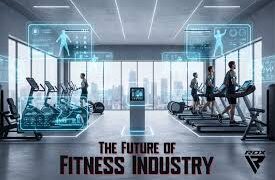AI, predictive dashboards, and standards-driven automation are transforming HR into a strategic intelligence function.
The digital transformation of human capital management has entered a new phase. Across industries, enterprises are moving from transactional workflows to intelligent, adaptive HR ecosystems powered by AI, predictive analytics, and secure cloud integrations. At the heart of this transformation is a new generation of architects and technologists designing the frameworks that enable this strategic shift.
Among them is Kranthi Kumar Routhu, whose contributions between 2017 and 2022 reflect the evolution of HR from monolithic systems to intelligent, event-driven platforms. His published works, ranging from reusable integration frameworks and AI-augmented payroll optimization to standards-driven benefits automation and predictive workforce dashboards position him as a blueprint architect for next-generation digital HR.
A Five-Year Arc: From Foundations to Intelligence
Routhu’s body of work shows a clear, structured progression:
- 2017–2018, Integration & Standardization: “Reusable Integration Frameworks in Oracle HCM: Accelerating Enterprise Automation through Standardized Architecture” introduced modular integration blueprints using Oracle Integration Cloud. These frameworks reduced reliance on brittle point-to-point connections, enabling standardized and secure data exchange.
- 2019–2020, AI-Driven Service Intelligence: In “Conversational AI in Human Capital Management: Transforming Self-Service Experiences with Oracle Digital Assistant” (Dec 2019), Routhu demonstrated how conversational interfaces could reduce support overhead and deliver 24/7 employee access.
His “AI-Enhanced Payroll Optimization” (Feb 2019) and “Hybrid Machine Learning Architecture for Absence Forecasting within Oracle Cloud HCM” (June 2019) pushed HR workflows toward predictive automation. - 2021–2022, – Strategic Intelligence & Automation: “AI-Augmented Benefits Administration: A Standards-Driven Automation Framework with Oracle HCM Cloud” (June 2021) formalized how AI and HR-XML standards enable scalable benefits automation.
“Harnessing AI Dashboards in Oracle Cloud HCM: Advancing Predictive Workforce Intelligence” (Dec 2021) introduced a decision-support architecture integrating predictive models, workforce planning, and explainable analytics.
This structured arc from integration, to intelligence, to strategy mirrors how enterprise HR systems themselves have evolved.
“The last few years have shown that integration is only the beginning,” says a senior HR technology strategist. “Kranthi’s work embodies how enterprises are moving from connectivity to intelligence from data pipelines to decision platforms.”
Predictive Dashboards Reshape Workforce Strategy
By 2022, predictive dashboards had become a centerpiece of strategic HR. Using Oracle Analytics Cloud, organizations can now forecast attrition, detect engagement risks, simulate workforce scenarios, and plan skills investments, all in real time.
These dashboards move beyond reporting; they enable proactive action. Leaders no longer wait for issues to surface; they act on predictive signals, informed by explainable AI models. The underlying architecture borrows directly from Routhu’s principles: modular design, security-by-default, and governance-driven standardization.
According to Forrester Research forecasts, more than 75% of large enterprises were expected to embed predictive intelligence directly into their HCM workflows by 2024, a trajectory consistent with Routhu’s 2021 and 2022 designs.
Automation in Benefits and Core HR Functions
One of the most tangible applications of this architectural shift is benefits administration. Historically one of HR’s most manual processes, benefits have been transformed by AI-powered recommendation engines, event-driven automation, and HR-XML standards for interoperability.
These capabilities allow enterprises to:
- Accelerate employee onboarding
- Reduce enrollment and reconciliation errors
- Improve compliance with global regulations
- Deliver personalized employee experiences at scale
“We’re seeing benefits administration shift from being an administrative burden to a strategic advantage,” notes an analyst at Gartner. “AI and standards-based integration, like those reflected in Routhu’s architecture, are key enablers.”
Security, Trust, and Explainable AI
Routhu’s work consistently applies a security-by-design philosophy. His integration blueprints align with National Institute of Standards and Technology (NIST) SP 800-46 guidelines on identity, encryption, and auditing. Core elements include:
- Token-based authentication and role-based access control
- Granular logging and compliance-ready auditing
- Built-in encryption and data masking for sensitive records
Crucially, Routhu incorporates Explainable artificial intelligence (XAI) to ensure predictive models remain interpretable and auditable are critical in areas like compensation, workforce planning, and DEI compliance.
Industry Momentum: From Automation to Autonomy
Routhu’s work aligns with major industry shifts:
- AI + Integration as Core Stack: Predictive intelligence embedded directly into integration layers.
- Standardization: HR-XML and API-first design reduce complexity and cost.
- Decision Support: Dashboards replace static reporting with intelligent insights.
- Security + Trust: Zero-trust architectures and explainable AI drive governance.
- Employee Experience: Conversational AI becomes a strategic engagement layer.
These trends mark a decisive move from automation to autonomy, a future where HR systems sense, analyze, and act with minimal human intervention.
Challenges and Real-World Considerations
While the vision is compelling, enterprises must address practical constraints:
- Establishing strong governance frameworks to prevent integration sprawl.
- Investing in AI model monitoring to mitigate bias.
- Ensuring change management readiness to support cultural shifts toward intelligent workflows.
Early adopters, particularly in financial services and healthcare, have reported 35–50% reductions in administrative time for benefits and payroll cycles using standardized, AI-driven frameworks—a testament to their operational impact.
Looking Ahead: Autonomous HR Systems
Routhu’s trajectory positions him not just as an implementer, but as a pattern-setter for how enterprises will design HR architectures in the coming decade. His frameworks are reusable integrations, conversational interfaces, predictive dashboards, and security-first design that form a coherent blueprint for autonomous HR ecosystems.
As AI, analytics, and cloud-native integration converge, HR is becoming a strategic intelligence function, capable of shaping business agility, compliance, and workforce strategy in real time.





























